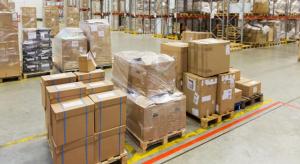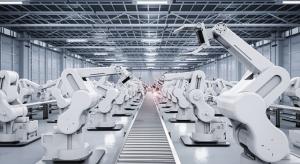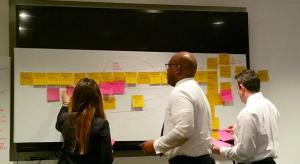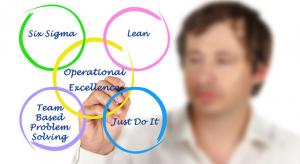All Features

Cameron Shaheen
With the holidays fast approaching, manufacturers, distribution centers, and e-commerce providers are working to meet growing customer demand, while also navigating severe supply-chain disruptions and mounting labor shortages. At this point, we all had hoped to have the devastating effects of the…

David Isaacson
Within every organization, problems or incidents arise that can affect the quality of your operations. Take for example, food recalls due to improper food labeling that not only could cause sickness in humans, but also result in a hit to a company’s reputation. Or, automotive product recalls due to…

Chuck Werner
Manufacturers should routinely ask themselves: “How do I know what my problems are?” The old-school way to answer this question was based on having the resources to produce spreadsheets of operational data and the expertise to analyze the data and understand how to respond.
This does not describe…

Gleb Tsipursky
How should organizations—including their quality departments—reshape office space to maximize productivity in the future of work? What will the new workspace—from the office to homes—look like in the future? We know it will be different. But to survive and thrive in the post-Covid world, you need…

William A. Levinson
This article contends that we should replace “quality” with “value” to address an enormous array of previously unaddressed risks and opportunities. Poor quality is only one of the Toyota Production System’s seven wastes, and it is rarely the most costly one because it is also the only waste to draw…

Jim Benson
Stress is a natural physical and mental reaction to life experiences. In fact, for short periods of time, it is actually valuable to us. The hormones our brains release during stressful moments were designed to protect us by preparing us to react quickly in dangerous situations.
Unfortunately,…

Bruce Hamilton
Just a little over a year ago we lost Hajime Oba, one of the great pioneers of Toyota Production System (TPS) learning in the United States. In 1992, he was the founding manager of the Toyota Production System Support Center (TSSC), a nonprofit affiliate of Toyota Motors of North America (TMNA),…

Stavros Karamperidis
Ningbo-Zhousan may not exactly be a household name, but find something in your house made in China, and it’s quite likely it was delivered from there. Ningbo-Zhousan, which overlooks the East China Sea some 200 km south of Shanghai, is China’s second-busiest port, handling the equivalent of some 29…

Rick Gould
Ever since people could tie logs together to form rafts and use them to transport goods by water, seaborne trade has flourished and grown. Historians believe that the first international trade routes were developed 5,000 years ago between the Arabian Peninsula and Pakistan, while by the 18th…

Saligrama Agnihothri
Health-tracking devices and apps are becoming part of everyday life. More than 300,000 mobile phone applications claim to help with managing diverse personal health issues, from monitoring blood glucose levels to conceiving a child.
But so far the potential for health-tracking apps to improve…

Dawn Bailey
The spirit of service—for a small clinic started in 1913 to provide free care to Los Angeles (LA)—lives today in the servant-leader aspirations of 2019 Baldrige Award recipient Adventist Health White Memorial (AHWM), a 353-bed, safety-net hospital.
The community of two million people that AHWM…

John Preston
‘This government is obsessed with skilling up our population,” said Boris Johnson in his recent speech on “leveling up.” There’s still a fair amount of uncertainty about exactly what the United Kingdom prime minister’s plan to level up the regions will involve, but manufacturing and skills seem…

Jim Benson
Value stream mapping is a team exercise, it’s collaborative, enlightening, and the foundation for professionalism.
I’m pretty well-known for saying that teams are unique and that there is no one process that satisfies every team’s needs. There is, however, one activity that I’ve seen every team we…

Silke von Gemmingen
Due to digitalization in Industry 4.0, internal logistics is subject to constant change. Internal traceability—i.e., tracking goods in the warehouse or production facility—increasingly plays a key role. Manufacturers and consumers are placing more emphasis on the safety and quality of products.…

David Cahn
Lean Six Sigma has improved manufacturing operations and processes for years now. Now the effect of the methodology is extending to supply chain and operations to help eliminate waste and reduce variation. Using lean to eradicate waste and Six Sigma to eliminate defects by reducing process…

Emily Newton
Effective equipment testing is essential for manufacturers of industrial equipment and end-users. Without testing, defects and damage can shorten the life span of equipment, cause unplanned downtime, and reduce the quality of finished goods.
This is especially true for businesses in sectors like…

Bruce Hamilton
PDCA—plan, do, check, act (or adjust)—is one of those acronymic concepts that regularly finds its way into lean discussions. Descended from Francis Bacon’s scientific method (hypothesis, experiment, confirmation), PDCA has become a ubiquitous catchword for business process improvement. From…

Glenn Daehn
Failure of a machine in a factory can shut it down. Lost production can cost millions of dollars per day. Component failures can devastate factories, power plants, and battlefield equipment.
To return to operation, skilled technicians use all the tools in their kit—machining, bending, welding, and…

Doug Devereaux
The premise for the NIST MEP Digital Supply-Chain Network project is familiar to MEP centers—many small and medium-sized manufacturers (SMMs) are often not ready for Industry 4.0 and don’t know how to implement it. Manufacturers with fewer than 50 employees often lag in digital supply-chain areas…

Jim Benson
No matter who you are or what you do, you create systems and live in the systems of others every day. But for some reason, we’re never actually taught lean systems thinking. We think it is natural, that we just sort of “get it.”
On a personal level, we are most often governed by cognitive biases…

Benjamin Kessler
Suddenly, supply chains are in the spotlight. The practical details of how products arrive on supermarket shelves, for example, gained unwelcome relevance amid last year’s wave of panic buying caused by Covid-19 disruption. At the same time, the environmental damage wrought by wasteful industrial…

James Wells
I was talking recently with a friend who runs an academic program at a major U.S. university. She was telling me about solving a problem in her department and how the solution was obvious so she just did it. She then related how one of her colleagues protested that she should have used some Six…

Bruce Hamilton
This time of year the abundant ads for junk removal and cheap storage units remind us that it’s time for spring cleaning, an annual pastime that has perhaps been bolstered by the need to unlock extra space in the home during the pandemic. Businesses, too, have managed to find space to accommodate…

Jim Benson
We want to grow as professionals. We want our products to be better, our know-how to be deeper, our impact to be known and recognized.
This is impossible without continuous improvement.
I have met many mediocre professionals who are mediocre only for one reason: They feel like they are done…

Jim Benson
In lean there is mura, the waste of unevenness.
It’s probably the most important, but also most overlooked, in the waste theater.
For knowledge work, unevenness primarily interrupts flow. It’s when you have work that you should do easily but you don’t. There is this mura lying around that makes…